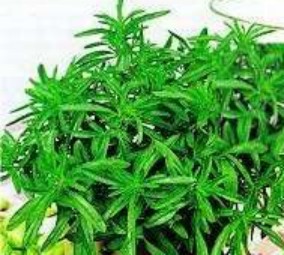 Savory
is mainly a culinary herb that has been used to flavor cooking for over
2,000 years. It was one of the strongest culinary herbs before world
trade brought stronger taste enhancers, such as black pepper.
Savory
is mainly a culinary herb that has been used to flavor cooking for over
2,000 years. It was one of the strongest culinary herbs before world
trade brought stronger taste enhancers, such as black pepper.
There are actually two different Savories, Summer Savory, pictured above,
which is an attractive trailing annual with pale green leaves that grows
to about 18 inches, and Winter Savory, pictured below, which is a woody
perennial with thick, tough, and bright green leaves and grows to about
15 inches. Other than the obvious gardening aspects, both are used
in essentially the same ways.
Savory is native to the Mediterranean, but has naturalized throughout North
America. It prefers full sun and light, dry soil. Summer Savory
is easy to grow from seed and germinates rapidly. Winter Savory germinates
less rapidly but is hardy to New York City, and tolerates less than perfect
soil. This is a good herb for fresh indoor use during the winter.
The harvest for Summer Savory can be extended if you keep the tips of the
branches cut off. Winter Savory can be harvested as needed all winter.
Both Savories can be dried and will retain their flavor and color.
Savory makes a good companion plant for other herbs and vegetables.
Please see Companion
Planting for more details.
Both Summer and Winter Savory are used often in cooking. Summer Savory
tastes like peppery Thyme. It blends well with many flavors and is
used in creamy soups, chicken soup, beef soup, liver, fish, flavored butters
and vinegars, beans, peas, asparagus, parsnips, squash, Brussels sprouts,
and eggs, to name a few. Winter Savory has a stronger, more piney
flavor, and is mainly used with strong game meats, and (because of the toughness
of the leaves) in dishes that take a long time to cook, such as soups, stews,
and for seasoning dried beans.
 Savory
is mainly a culinary herb that has been used to flavor cooking for over
2,000 years. It was one of the strongest culinary herbs before world
trade brought stronger taste enhancers, such as black pepper.
Savory
is mainly a culinary herb that has been used to flavor cooking for over
2,000 years. It was one of the strongest culinary herbs before world
trade brought stronger taste enhancers, such as black pepper.